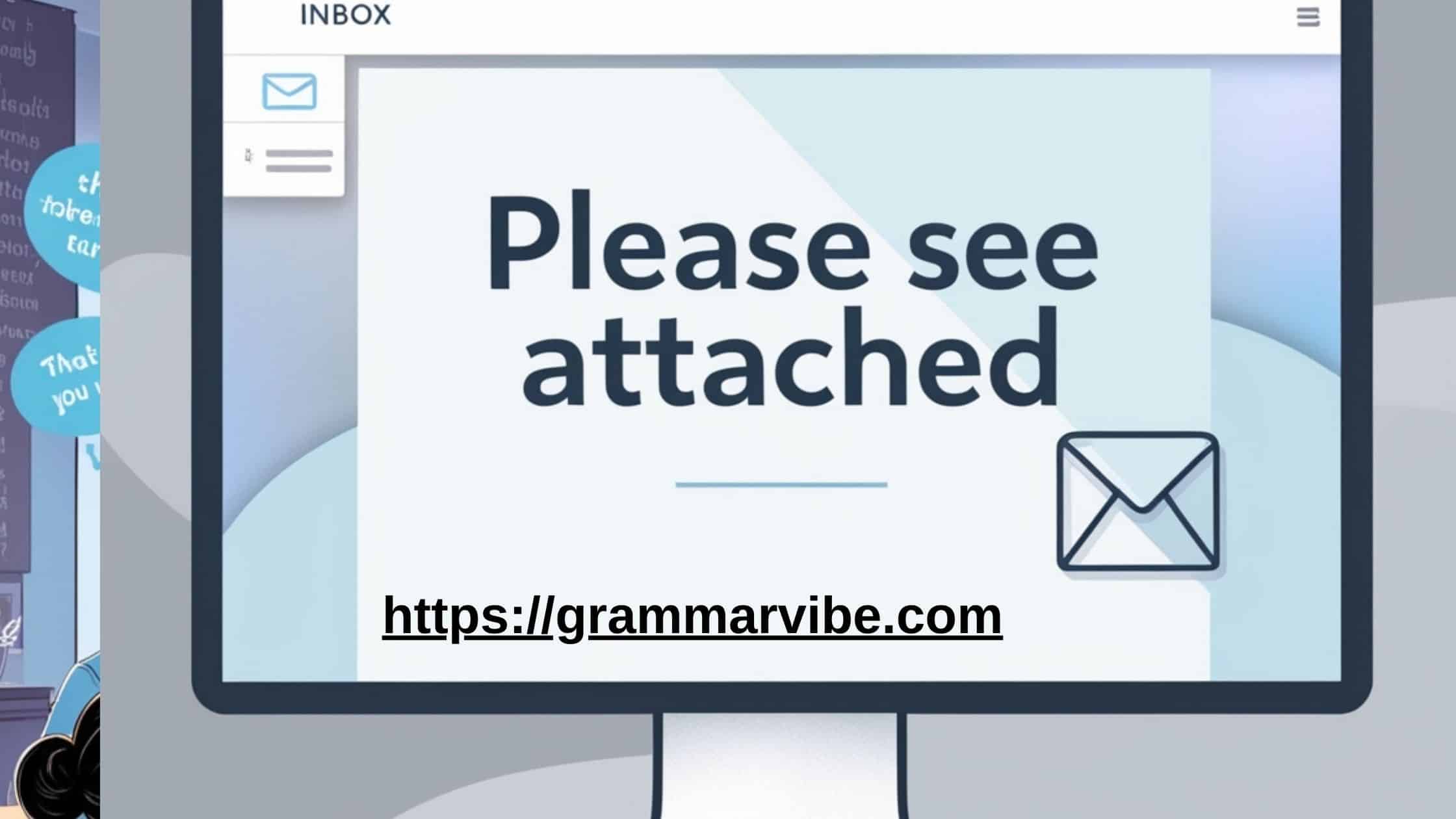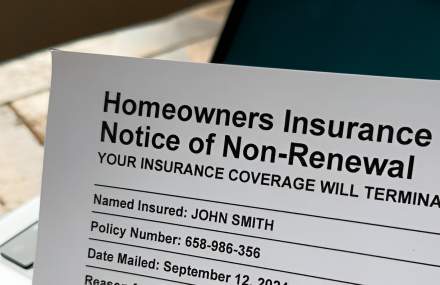In the world of professional communication, one phrase that’s often overused in emails is “Please see attached.” Whether you’re sending a proposal, a report, or any other document, finding a variety of ways to direct the recipient’s attention to email attachments can make your emails sound more dynamic and engaging. Repetitive phrasing can quickly become monotonous, so mixing it up with these alternatives will keep your messages fresh and professional.
Here, we’ll explore 15 different ways to say “Please see attached” and provide scenario examples to show how each phrase can be seamlessly used in real emails.
1. “I Have Attached [Document Name] for Your Review”
This is a polite and formal way to mention that you’ve included a document for the recipient’s review. It conveys that you expect the recipient to go over the attachment and provide feedback or consider it carefully.
Example:
Subject: Annual Budget Proposal
Email Body:
Hi Sarah,
I hope you’re doing well. I’ve attached the annual budget proposal for your review. Please take a look at the figures, and let me know if you have any feedback or suggestions.
Best regards,
John
This approach works best when sending documents that require attention or review and where follow-up might be expected.
2. “Please Find the Attached [Document Name]”
“Please find the attached” is a classic and polite way of telling someone that you’ve attached something important. This phrase works well in both formal and informal settings, and it’s often used when the attachment doesn’t necessarily require immediate action.
Example:
Subject: Meeting Agenda
Email Body:
Hello Michael,
As requested, please find the attached agenda for tomorrow’s meeting. Let me know if there’s anything you would like to add or modify.
Best,
Anna
Here, it’s polite and straightforward, directing the recipient to the attached file without assuming any action.
3. “The [Document Name] is Attached for Your Reference”
!["The [Document Name] is Attached for Your Reference"](https://grammarvibe.org/wp-content/uploads/2024/12/Grey-and-Black-Simple-Digital-Marketing-Tools-Blog-Banner-14-1024x576.jpg)
This is a great option when you’re sending documents that are meant to provide reference material rather than requiring immediate action. It implies that the attachment may support a conversation or decision but doesn’t necessarily require a response.
Example:
Subject: Quarterly Performance Review
Email Body:
Hi David,
The quarterly performance review is attached for your reference. It contains an overview of last quarter’s sales figures and trends. Please feel free to refer to it during our next meeting.
Regards,
Emily
This works well when the attachment is informational or supplementary and not urgent.
4. “You Will Find [Document Name] Attached”
This phrase is a little more direct, informing the recipient exactly what to expect. It’s often used in formal emails and is effective when the document is central to the email body.
Example:
Subject: Marketing Plan Proposal
Email Body:
Dear Tom,
As discussed, you will find the marketing plan proposal attached. We are looking forward to your feedback and any suggestions you may have.
Best regards,
Rachel
This is a straightforward way of directing the recipient‘s attention to an important document, especially when a follow-up is expected.
5. “Please Refer to the Attached [Document Name]”
This phrase is perfect when the attachment contains instructions, guidelines, or any detailed information the recipient needs to follow up on. It emphasizes the importance of looking at the attachment for relevant information.
Example:
Subject: Project Timeline Update
Email Body:
Hello James,
Please refer to the attached project timeline for a detailed breakdown of our next steps and deadlines. Let me know if you need any additional information.
Best,
Sophia
By using this phrase, you’re encouraging the recipient to act upon the document or rely on it for further understanding.
More for you: 15 Other Ways to Say “For Your Information”
6. “See the Attached [Document Name] for More Details”
This alternative is useful when you want to encourage the recipient to read the attachment for further information without overloading the email body. It’s effective when you’ve provided a brief summary but want to highlight that more details are available in the attachment.
Example:
Subject: Sales Figures for Q3
Email Body:
Hi John,
I’ve summarized the key points of the Q3 sales figures in the email body. However, see the attached report for more details on each region’s performance.
Thanks,
Emma
This phrase strikes the right balance between providing an overview in the email while directing the recipient to the attached report for in-depth information.
7. “For Your Convenience, I’ve Attached [Document Name]”
This is a friendly and thoughtful way to present attachments, especially when the document is designed to make the recipient’s task easier, like forms or guidelines.
Example:
Subject: Onboarding Documents
Email Body:
Hi Olivia,
For your convenience, I’ve attached the onboarding documents. These include all the forms you’ll need to complete before your first day.
Best regards,
John
This phrase emphasizes that the attachment is meant to make the recipient’s life easier, so it’s ideal when sending helpful resources.
8. “Kindly Check the Attached [Document Name]”
A polite way to encourage the recipient to review the attachment, “kindly check” is best used when you need feedback or confirmation on something. It’s a courteous way to prompt the recipient to act.
Example:
Subject: Draft Report for Review
Email Body:
Hi Lily,
Could you kindly check the attached draft and provide any feedback? We’re looking to finalize it by the end of the week.
Thank you,
Michael
This is a professional way to request a review, implying that you are expecting a response or feedback.
For your interest: 15 Other Ways to Say “I Don’t Know”
9. “Enclosed is the [Document Name] for Your Perusal”
This phrase carries a more formal tone and is often used in legal or academic contexts. It suggests that the document is available for thorough reading or examination, making it suitable for high-level business or official communication.
Example:
Subject: Contract Agreement
Email Body:
Dear Mrs. Thompson,
Enclosed is the agreement for your perusal. Please take your time to review the terms and let us know if you have any questions or require further clarification.
Sincerely,
David
Using “perusal” in this context emphasizes the seriousness and attention to detail required when reading the attached document.
10. “Please Consult the Attachment for Further Information”
This is an ideal phrase for when the attachment contains detailed instructions, guidelines, or other critical information. It directs the recipient to the attachment when more details are needed.
Example:
Subject: Technical Support Documentation
Email Body:
Hello Jack,
For detailed troubleshooting steps, please consult the attachment for further information. The installation manual should guide you through resolving the issue.
Best,
Sarah
This directive clearly tells the recipient where to find the additional information they need.
You might also like: 15 Other Ways to Say “Where Are You Going”?
11. “Here is the [Document Name] for Your Review”
A simple, direct alternative, this phrase gets right to the point. It’s suitable when you’re attaching a document that requires attention but doesn’t need to be formal.
Example:
Subject: Budget Breakdown
Email Body:
Hi Chris,
Here is the budget breakdown I promised. Please review and let me know if anything looks off.
Best,
Daniel
It’s a straightforward approach that gets the message across clearly and without overcomplicating things.
12. “I’ve Included [Document Name] for Your Convenience”
!["I’ve Included [Document Name] for Your Convenience"](https://grammarvibe.org/wp-content/uploads/2024/12/Grey-and-Black-Simple-Digital-Marketing-Tools-Blog-Banner-13-1024x576.jpg)
This phrase, like “for your convenience,” emphasizes that the attachment is there to make the recipient’s job easier. It’s useful when the document helps clarify or support the subject matter of the email.
Example:
Subject: Travel Guidelines for Upcoming Conference
Email Body:
Hi Maria,
I’ve included the travel guidelines for the upcoming conference. This document should help you plan your trip and ensure you have everything you need.
Best regards,
Tom
It’s a friendly and approachable way to highlight that the attached document is meant to be helpful.
13. “Attached is the [Document Name] for Your Action”
This variation is ideal when you require the recipient to take some action based on the attachment, such as signing a contract or filling out a form.
Example:
Subject: Action Required: Signature on Contract
Email Body:
Dear Peter,
Attached is the contract for your action. Kindly sign it and return it to me by the end of the week.
Best regards,
Laura
This is an effective way to prompt immediate action or follow-up.
Check out this: 15 Other Ways to Say “As Well As”
14. “You’ll Find [Document Name] Attached Below”
This alternative gives a casual vibe while still being direct. It’s helpful when you want the recipient to know exactly where to look in the email.
Example:
Subject: Expense Report Submission
Email Body:
Hi Nicole,
You’ll find the expense report attached below. Please review it and let me know if anything seems off.
Thanks,
Brian
This phrase feels a little less formal, making it ideal for informal emails.
15. “The [Document Name] is Attached for Your Information”
Similar to “for your reference,” this phrase suggests that the document is informational but may not require immediate action.
Example:
Subject: Product Updates
Email Body:
Hi Jennifer,
The product update is attached for your information. It outlines the latest features and improvements we’ve made.
Best,
Michael
This is effective when sending informational updates or materials that the recipient might find useful.
Summary Table of Alternatives to “Please See Attached”
| Phrase | Scenario Example |
|---|---|
| I have attached [document name] for your review | Sending a proposal for feedback |
| Please find the attached [document name] | Sending a report or agenda |
| The [document name] is attached for your reference | Sharing supporting documents for a meeting |
| You will find [document name] attached | Sharing a completed project plan |
| Please refer to the attached [document name] | Directing someone to a guideline or instructions |
| See the attached [document name] for more details | Sending additional information or data |
| For your convenience, I’ve attached [document name] | Sending a form or easy-to-follow instructions |
| Kindly check the attached [document name] | Requesting feedback or verification of a document |
| Enclosed is the [document name] for your perusal | Sending formal or legal documents for review |
| Please consult the attachment for further information | Providing in-depth technical support or instructions |
| Here is the [document name] for your review | Sharing a budget breakdown for approval |
| I’ve included [document name] for your convenience | Sending guidelines or travel instructions for a conference |
| Attached is the [document name] for your action | Requesting the recipient to take action on a contract |
| You’ll find [document name] attached below | Sending an expense report for review |
| The [document name] is attached for your information | Sharing product updates for knowledge |
Conclusion
These alternatives to “Please see attached” can make your emails feel fresher, more personable, and better tailored to the recipient‘s needs. Whether you’re sending documents for review, reference, or action, these phrases can help you communicate more effectively. By varying your phrases and sentence structure, your professional communication will sound more natural and engaging. So next time you send an email attachment, try one of these alternatives for a more polished and professional touch!

Kyren Paul is an experienced blogger and the creative mind behind “Grammar Vibe.” With a passion for the nuances of English grammar, he brings clarity and insight to everyday language topics, making grammar accessible and engaging for readers of all levels.









Leave a Comment